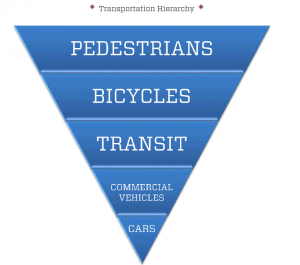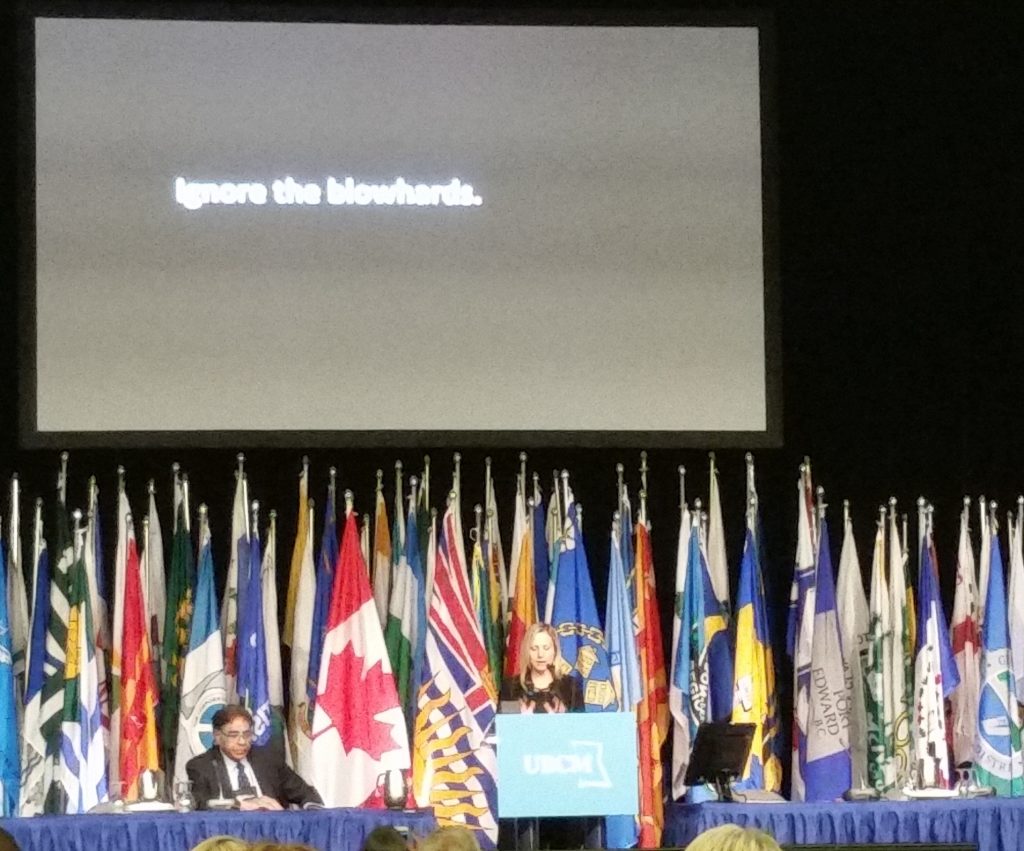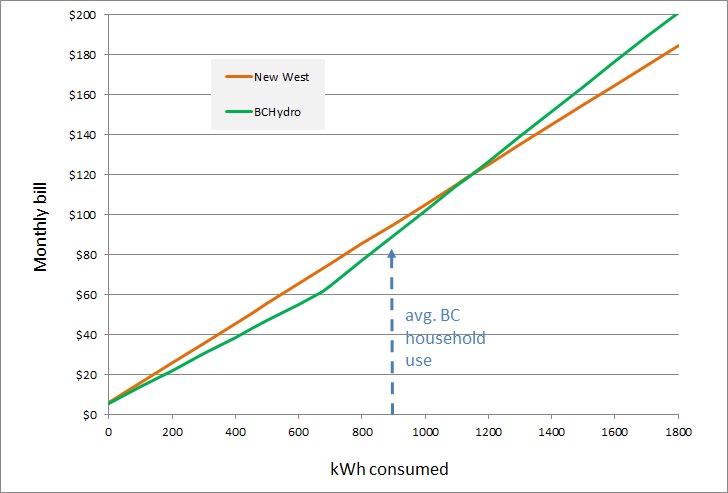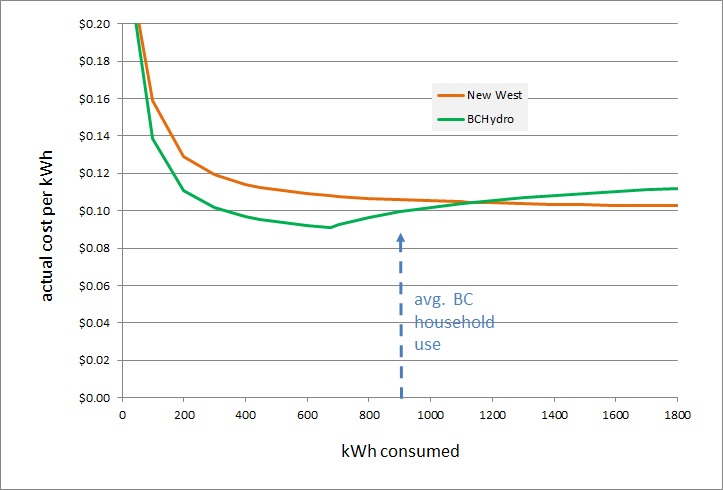I’m going to go right ahead and call the October 17, 2016, edition of Council the priorities and hard choices edition. Although there was lots of good news, there were some no-fun decisions, and saying no is never popular. I didn’t sleep well the night after, because the impacts of the “no”s stand out in your mind much more than the good feelings of the “yes”es.
The following items were moved on the Consent Agenda:
Parkade Public Art Project Lighting
The remaining half of the parkade is going to have an art installation that will be visible from the Pier Park and bridges crossing the river, to be paid for out of the Parkade renewal budget. However, there is an opportunity to use lights to accentuate the public art installation and make it more prominent at night. The Public Art Advisory Committee recommended that we spend the money to install the lights from the Public Art Reserve Fund. Council agreed.
Acting Mayor Appointments for December 2016 to November 2017
The role of Acting Mayor is to fulfill the legal role of the Mayor when His Worship is out of town or otherwise unable to do so. Mostly, this means reviewing and signing forms that take executive oversight, taking the occasional meeting, and (of course) attending official functions. The 6 Councillors share the load by each taking two months out of the year (mostly with the expectation that we won’t take extended vacations during those months). I have March and August again. Send your parking ticket complaints for those two months directly to me.
Establishment of a New Westminster Rent Bank Program
This item was passed on Consent, but our MLA came to Council to delegate on the topic, which lead to a discussion. This is a great program idea, one that has been successful in many other jurisdictions as a pro-active measure to reduce homelessness.
The idea is that a social service agency sets up a short-term loan office for the sole purpose of providing rent (or utility) relief to a person threatened with homelessness. With a high rental population and high percentage of people living close to the edge when it comes to housing affordability, New Westminster can really benefit from a program like this.
Judy Darcy’s office has done a lot of the legwork on this file, forging partnerships with credit unions and service agencies, and securing some seed capital. The City’s contribution will be to provide a small operating grant to cover some expenses, well within the amount of money the City could potentially save by not having to provide shelter or policing and emergency services to people who are made homeless by a short-term financial setback. I’m glad Judy brought this to us, and am proud the City agreed to provide some modest support.
612 – 618 Brantford Street: Official Community Plan Amendment – Consultation Report
This 6-story residential building project at the end of Bent Court in the Brow of the Hill neighbourhood will be going to another round of public consultation, and will culminate in a Public Hearing, so I will hold some of my comments until then.
258 Nelson’s Court (Brewery District Building 6): Consideration of Issuance of Development Permit
This is a consideration to issue a DP for the sixth building (and third residential tower) at the Brewery District. The DP has no variances, as it is coming after a significant amount of public consultation related to the last couple of phases of the Brewery District development. The design, density, and height of the building are as presented in the earlier rezoning consultations, so no surprises here.
Queen’s Park Heritage Conservation Area and Control Period: Work Plan and Related Terms of Reference
Work on the a potential Queens Park Heritage Conservation Area is progressing, and needs to happen quickly. The temporary protection period that provides Council the legal authority to turn down demolition applications will expire next summer, so we need something in its place, and need to extend our public outreach in regards to creating a defensible and workable process if the community wants to take action on this.
Some public consultation on this is coming in later November. If you live in Queens Park, you might want to start spreading the word to your neighbours. We are serious about reaching out to the public here, but the timelines are tight, and this is a pretty significant change to how the City regulates building form in the neighbourhood – it should lead to exciting conversations.
Exempt Properties – Review of Questionnaire Results
There are lots of properties in the City that don’t pay property taxes, either because of statutory exemptions (ones the province requires through the Community Charter) or through permissive exemptions (ones Council allows after determining the land use serves some public good worth subsidizing). Every year, we publish a list of the permissive exemptions for all to see. Read ‘em and weep.
Report on Major Purchasing Transactions for the Period May 1 to August 31, 2016
Three times a year, Staff report to Council (and the public) what purchases over $100,000 they have made over the last 4 months, and all “sole source” purchases over $50,000. Note, these are not new costs, but budgeted expenses for already approved projects or equipment replacement, and they are being reported out mostly to demonstrate that our procurement practices are open and defensible.
337 Fourth Street: Development Variance Permit 00611 for Parking Space Exemption for Secondary Suite – Consideration of Issuance
The owner of this home wishes to legalize their secondary suite, which is permitted by their zoning, however they would be required to provide a second parking spot on site. This would, in turn, require the removal of two mature trees, and even the removal of a City boulevard tree.
Instead, they are asking for a variance removing the requirement for another off-street parking spot, such that the trees can be protected: providing a relatively affordable housing option in the heart of Queens Park while protecting trees. This generally sounds like a good solution to me, but if you don’t agree, there will be an opportunity to be heard on October 24, 2016. C’mon out and tell us what you think!
725 Fifth Street: Development Variance Permit 00608 for Parking Space Exemption for Secondary Suite – Consideration of Issuance
Similar to the item right above, except it is two trees and it is in Glenbrook North. Again, if you like this idea, or hate it, there will be an opportunity to be heard on October 24, 2016. C’mon out and tell us what you think.
We then (after Proclamations) had a couple of Presentations on new development projects being proposed:
145 – 201 E. Columbia Street: Rezoning and Development Permit (DPS00044) for Proposed Six Storey Mixed Use Commercial and Residential (Rental) Building with Two Townhouse Units
This was a preliminary report, with the project still to go to public consultation in the neighbourhood, Design Panel, Advisory Planning Committee, and potentially to a Public Hearing if it makes it through those processes. The project is on the edge of Economic Health Care Cluster proposed for E.Columbia as peripheral development around the expanded RCH. Wesgroup is planning to make it a 6-story 70 unit secured rental building with retail or commercial on the ground floor along E.Columbia.
600 to 720 Quayside Drive: Special Development Permit Application and Development Variance Permit – Preliminary Report
This is the big project of the week, and the biggest pending project in town. This is again only a preliminary report, but the project as proposed meets the current Master Plan and Zoning as far as land use, density, parking and such, and would only need a DVP, which is generally less onerous process than a Rezoning and starting a new Development Permit from scratch – that work was done back in 2013-2014 and final Zoning awarded in November 2014. Short version: there will be a public Opportunity to be Heard, but the timelines for Public Consultation on this project are much shorter that you might expect.
I can maybe write more later about the various aspects of this project. It hits a lot of the right marks as far as public realm and completing the waterfront vision. The height (53 stories for the tallest building, which is 6 more than currently allowed in the zoning) is sure to raise a few eyebrows and will predictably attract the most media attention, but the density is the same as the previous three-tower proposal, and significantly less than the original 5-tower concept for the site. The reduced footprint means more public space and better opportunities for connecting people to the waterfront. People spend way more time interacting with the bottom 6 floors of a building than the top floors 6 floors, but you know which we are going to end up talking about.
The biggest concern I have with this project right now is the impact on the River Market, which I think is a keystone business in this City, and the defining element of our waterfront. It has had its ups and down in the 30 years since it opened, and its fate has paralleled the economic cycles in the City. However, I cannot overstate its symbolic importance to the recent renewal of our waterfront and the role it plays in making our waterfront active.
The River Sky development and the construction around Begbie Street to facilitate whistle cessation have had an impact on the businesses at the Market. They have been, like many of the businesses on Front Street impacted by the Mews development, patient and understanding that the short-term pain of being adjacent a construction site is offset by the long-term gain of promised improved streetscape, more customers, and more vibrancy in the neighbourhood.
There has been expectation, and even anticipation, of a new development project at this site, but the several years of latency has led to the impression that nothing is likely to occur until after River Sky is done. It now appears that next phase is going to come sooner than expected, and overlap with the River Sky construction is possible. There are details to dig into here, through a Servicing Agreement and Construction Management Plan, so I will remain optimistic that mitigation of these impacts is possible through adjusted timing or other accommodations, because the development as proposed brings a lot of good things to the waterfront, but we need a viable waterfront still operating when it arrives.
The following items were removed from the Consent Agenda for discussion:
Quayside to Queensborough (Q2Q) Pedestrian and Bicycle Bridge – Cost Estimate and Crossing Options
This is the most disappointing part of the evening’s agenda. I have for years supported the concept of a fixed Q2Q crossing, since I was just a lowly bike blogger at 10th and Royal. It is only after getting elected and digging into the details did I start to understand the range of complications this project presents. There have been several proposed solutions taken to public consultations, none of them perfect, but each of them presenting a unique set of challenges and coming with their own group of critics.
I can’t simplify this enough: We don’t have $40 Million to build a bridge. It simply isn’t in the budget of a City of 70,000 people with numerous competing infrastructure demands. The potential for us to fill the funding gap with senior government assistance is pretty limited, and the ask is big.
I will need to write more about this in a future blog, as the public reaction is already filling with rumours and suspicion (rhymes notwithstanding), but the short version is that it isn’t quite time to put the pencils down, but we are no longer full steam ahead (wow, mix metaphors much?). We need to look at the cost drivers, both engineering and regulatory, and look at alternatives that serve the Queensborough neighbourhood. Meanwhile, we are looking at trialing a passenger ferry service, which is (in my opinion) not an equal alternative, but may be the only path forward.
Proposed 2017 Schedule of Regular Council Meetings
Time to populate your calendars, schedule your babysitters, set up your PVR, and book your vacations: the 2017 Council Calendar is live. Don’t miss a riveting minute. The gallery offers comfortable seats, but you will only need the edge. Please, no wagering.
New Westminster Child Care Strategy (October 2016)
The City is aggressively moving to address a chronic shortage of Child Care facilities (and most importantly – affordable child care options) in the City. There is a lot of absorb here in this report, and there are a variety of ways we can help support or facilitate the development of more spaces, and how to address the growing need for affordable spaces. However, we need to be strategic, because there is (and will always be) more need that we can hope to fund as a local government. This becomes obvious when you read down to the next two agenda items.
Fundamentally, this is a senior government responsibility, and we need them to start to invest so that we can concentrate on doing things within our jurisdiction to make spaces more available. However, failing a change of government to one that cares about funding the needs of families, we need to start having discussions locally about what the role of our Reserve Fund and Grants are, and whether the formulas are providing enough resources to address the growing need.
Funding Request to Address the Child Care Situation in Queensborough
As reinforced by a Public Delegation from one of the not-for-profit childcare operators in town, the situation for Child Care in Queensborough is dire, with lengthy waiting lists meeting the numerous new young families moving to the neighbourhood. The infant/toddler level of care is most troubling, as it is the economically most difficult to set up and operate.
Our Social Planner has worked on a plan to re-purpose an empty piece of City land that is already appropriately located and zoned, and has identified a potential source of grant funds to help with the capital setup costs. We moved to use the majority of our remaining Child Care Reserve fund to do the preliminary site prep work, and begin the process of securing those grants.
701 Sixth Street: Glenbrooke Daycare Society Request for Financial Support
Here is the harder part, and a decision I don’t think anyone on Council was happy to make, to follow a recommendation no-one on staff was happy to make. We supported the recommendation to not fund this project to begin evaluating the engineering/building code changes required to add more childcare spaces to the Glenbrook Daycare location on Sixth Street.
As discussed above, we invest a lot in Daycare here in New West, especially for an aspect of program delivery that really should be funded by senior governments. However, our reserve fund is going to be completely tapped, and Queensborough is the priority right now. This project carried too much uncertainty for us to place it above other needs in the community right now.
As mentioned in the discussion above on the Child Care Strategy, we are going to have to have a discussion in Council about the funding formula for our Childcare Reserve Fund, and whether it is meeting the needs of the community.
Utilities User Fees and Rates Bylaw Amendment: Utility Charge Exemptions for Unoccupied Secondary Suites
This Bylaw simply formalizes what has been a long-standing policy regarding utility rates for secondary suites. If you have a legal secondary suite in your house, you pay 50% more for your utilities, unless you submit an affidavit to the City that the secondary suite is not occupied by a renter.
Frankly, I feel like this is a ham-fisted way to try to create fairness in our water and sewerage charges. Our practice is to make broad (almost certainly false) generalizations about how much water people use based on their domestic / housing situation, then apply those arbitrary categories to determining how much they pay to support our water and sewer utilities.
Last year, at the end of the drought that led the region to Stage 3 water restrictions, and flirting with stage 4, we had a delegation come to council asking about our approach to managing our limited water resources better, managing them more responsibly. We luckily did not have such a drought this summer, but that has not made the problem go away, it has only delayed our urgency to act.
Experience around the region has shown that metering our water utility will create conservation, and will allow us to replace these arbitrary water use categories with a fair rate system. We need to get moving on a voluntary metering system for single-family homes, and for homes that have secondary suites. It’s time.
We then processed a few Bylaws:
Parks and Recreation Fees Amendment Bylaw No. 7865, 2016 – Adoption
As discussed in our previous meeting, this Bylaw that sets our annual fee schedule for Parks and recreation programs was adopted, which makes it the law.
Engineering Fees and Rates Amendment (Secondary Suites) Bylaw No.
7861, 2016
As discussed above, this Bylaw that formalizes the way we manage utility charges for occupied secondary suites was given three readings.
Short Term Rental (STR) Policies and Bylaws
Finally, I brought a motion to Council asking that our staff start getting the pieces in place to update our Bed And Breakfast, Secondary Suite, and home based business regulations to allow residents interested in operating on platforms like AirBnB or VRBO to do so legally in the City, while managing the potential neighbourhood conflict issues that may arise to keep our residential areas safe and livable.
This came out of some discussions I have had with AirBnB operators in the City, and after attending a lot of meetings and discussions atUBCM last month. I will have more to write on this soon, so perhaps I’ll hold off a longer discussion for a full blog post.
And with that, we wrapped a long meeting. See you at Public Hearing next week!



